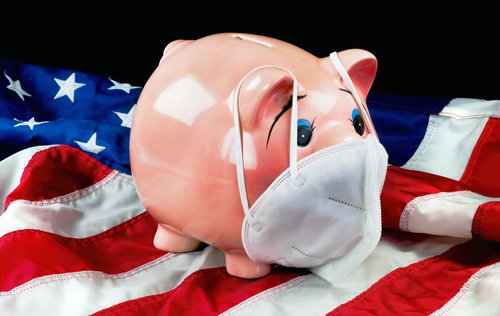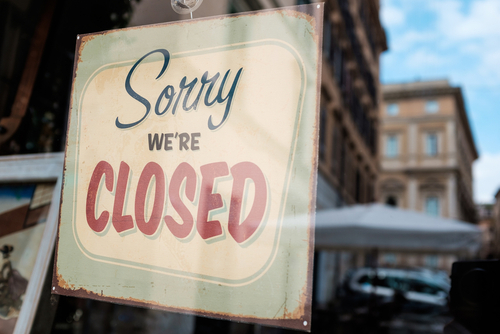 The CARES Act stimulus package substantially relaxed the rules around certain retirement account loan and distribution requirements, but with much confusion. As a result, the IRS recently put out a FAQ document to address the COVID-19 rule relaxation around IRA and 401(k) loans and distributions. This important information should come as welcome news for the nearly one percent of all retirement plan holders who have already taken a distribution under the new rules, according to Fidelity Investments.
The CARES Act stimulus package substantially relaxed the rules around certain retirement account loan and distribution requirements, but with much confusion. As a result, the IRS recently put out a FAQ document to address the COVID-19 rule relaxation around IRA and 401(k) loans and distributions. This important information should come as welcome news for the nearly one percent of all retirement plan holders who have already taken a distribution under the new rules, according to Fidelity Investments.
Who’s eligible?
If you, a spouse or dependent tested positive for COVID-19, you automatically qualify. You also may qualify under less direct circumstances, such as experiencing economic hardship due to being quarantined, laid off, receiving a reduction in work hours, or missing work because you don’t have childcare. Business owners who are forced to close or reduce operating hours also qualify.
How Much Can I Take Out?
COVID-19 impacted individuals can take up to $100k in distributions without paying the 10 percent penalty imposed on early withdrawals by people under 59½ years old. The $100,000 limit is the total for all the plans you have. For example, if you take $70k out of your 401(k), you can take only up to $30k out of your IRA under these rules. You will still owe taxes on the distributions as ordinary income; however, you are able to pay the taxes owed over a three-year period.
Can I Pay Myself Back?
The law also allows you to pay yourself back. Taxpayers can replace their distributions if they do so within a three-year timeframe. This means that if you take out a distribution in 2020, start to pay the taxes owed over the three-year rule and then pay back the distribution in 2022, you’ll be able to amend your 2020 and 2021 returns to get a refund, as well as not pay the tax you would have owed in 2022.
How Do Loans Work?
The maximum amount you can borrow increases from $50,000 to $100,000. You also can borrow the entire amount of your plan balance up to this limit (net of any outstanding loans). Moreover, for any loans you already have within the plan, the due date for payments due through the end of 2020 can be postponed for up to one year.
Is There Anything Else I Should Know?
Yes. First, there is more guidance coming from the IRS. Second, if you are eager to know what this formal guidance will look like, you can turn to the Hurricane Katrina relief rules from 2005 as this is what is expected will apply for the COVID-19 measures as well. Lastly, the IRS will generate a new form 8915E where taxpayers will report the repayment of COVID-19 covered distributions.

 After seeing a peak and then a sustained decline in coronavirus cases, hospitalizations, and deaths resulting from COVID-19, the White House and the Centers for Disease Control and Prevention has rolled out a three-tier approach to get the nation back to its pre-coronavirus economic activities.
After seeing a peak and then a sustained decline in coronavirus cases, hospitalizations, and deaths resulting from COVID-19, the White House and the Centers for Disease Control and Prevention has rolled out a three-tier approach to get the nation back to its pre-coronavirus economic activities. According to the futures market, Chicago Mercantile Exchange contracts are forecasting a drop of 27 percent in dividends over 24 months for the S&P 500 index. Dividends are projected to fall to $42.05 in 2021, a drop from 2020’s dividend of $47.55 and 2019’s high of $58.24. Looking forward to 2026, according to CME’s futures contract, the dividend is expected to recover to $56.65. While the latter years are not as likely as what’s up next, it’s worth taking note.
According to the futures market, Chicago Mercantile Exchange contracts are forecasting a drop of 27 percent in dividends over 24 months for the S&P 500 index. Dividends are projected to fall to $42.05 in 2021, a drop from 2020’s dividend of $47.55 and 2019’s high of $58.24. Looking forward to 2026, according to CME’s futures contract, the dividend is expected to recover to $56.65. While the latter years are not as likely as what’s up next, it’s worth taking note. That year or two when you are closing in on your retirement date, followed by a year or two after you retire, are the worst times for a sustained market decline. Market analysts call this scenario the sequence of returns (SOR) risk – because once your principal has been significantly reduced, there’s not enough time in the market left for you to recover those losses.
That year or two when you are closing in on your retirement date, followed by a year or two after you retire, are the worst times for a sustained market decline. Market analysts call this scenario the sequence of returns (SOR) risk – because once your principal has been significantly reduced, there’s not enough time in the market left for you to recover those losses. Due to the unprecedented effects of COVID-19, the line between our professional and personal lives has blurred. Trying to take care of job responsibilities from home requires new ways of navigating. Here are a few ideas to help you become more productive while working at home – and stay grounded in these uncertain times.
Due to the unprecedented effects of COVID-19, the line between our professional and personal lives has blurred. Trying to take care of job responsibilities from home requires new ways of navigating. Here are a few ideas to help you become more productive while working at home – and stay grounded in these uncertain times. Most states are starting to relax stay-at-home restrictions. As such, businesses are developing plans for bringing employees back to work. Many businesses are already affected by the pandemic and their future looks grim. Specifically, we are going to look at the IT sector and examine what spending might look like in a post-lockdown economy.
Most states are starting to relax stay-at-home restrictions. As such, businesses are developing plans for bringing employees back to work. Many businesses are already affected by the pandemic and their future looks grim. Specifically, we are going to look at the IT sector and examine what spending might look like in a post-lockdown economy. Phase 2 allocated $104 billion for three specific objectives: 1) Require private health insurance plans and Medicare to cover COVID-19 testing; 2) Expand unemployment insurance by $1 billion and loosen up eligibility requirements; 3) Provide for paid sick leave at an employee’s full salary, up to $511 per day, and paid family leave at two-thirds of a worker’s usual salary.
Phase 2 allocated $104 billion for three specific objectives: 1) Require private health insurance plans and Medicare to cover COVID-19 testing; 2) Expand unemployment insurance by $1 billion and loosen up eligibility requirements; 3) Provide for paid sick leave at an employee’s full salary, up to $511 per day, and paid family leave at two-thirds of a worker’s usual salary.